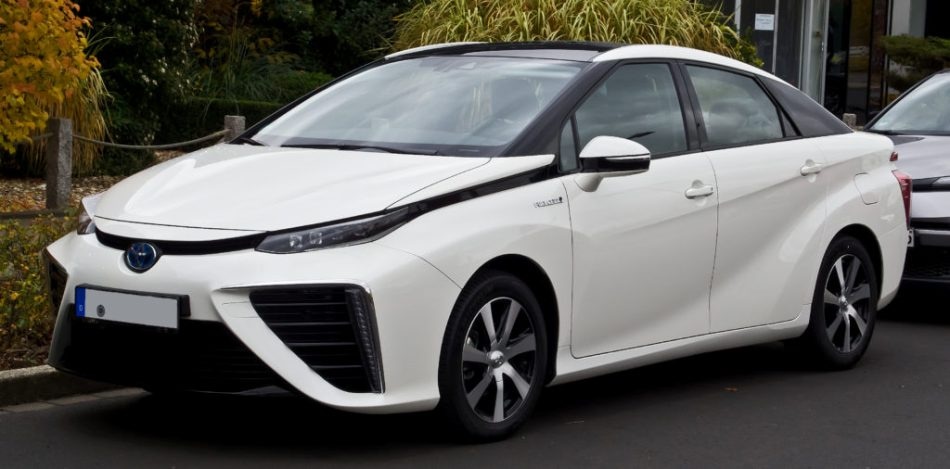Sep 13 2019
The largest source of greenhouse gas emissions in British Columbia is transportation. Scientists at the University of British Columbia (UBC) have designed a hydrogen supply chain model that can facilitate the adoption of zero-emission, hydrogen-powered cars—converting them from a novelty into daily transportation in merely 30 years.
 Toyota Mirai. (Image credit: M 93/Wikimedia Commons)
Toyota Mirai. (Image credit: M 93/Wikimedia Commons)
In a new research published recently, UBC scientists have described an analysis of the infrastructure required to support SUVs, hydrogen cars, and minivans in British Columbia. They suggested a refueling infrastructure that extends from Prince George in the north to Kamloops and Vancouver in the south and Victoria in the west.
Production units would trap by-product hydrogen from chemical plants or create it from water electrolysis and steam methane reforming. In addition, a network of refueling stations would be arranged to serve consumers in big urban centers.
Hydrogen-powered vehicles are a strong alternative to battery electric vehicles, which don’t always comply with fast-refuelling, long-distance travel or cold weather requirements. We believe we have created the most comprehensive model for hydrogen adoption in a region like B.C., where demand is still low for these types of vehicles.
Hoda Talebian, Study Lead Author and PhD Candidate, Department of Mechanical Engineering, UBC
The scientists, all affiliated with UBC’s Clean Energy Research Centre (CERC), looked at future demand for light-duty hydrogen vehicles and incorporated the potential effects of policy instruments such as B.C.’s carbon tax and the low carbon fuel standard.
“Provided B.C. maintains those policies, and assuming enough hydrogen vehicles are available, our model sees hydrogen demand growing significantly every year,” said co-author and CERC program manager Omar Herrera.
The scientists noted that hydrogen cars such as the Hyundai’s Nexo and Toyota Mirai are already present in B.C., and a public retail hydrogen station was launched in Vancouver in 2018—Canada’s first. By 2020, Victoria and Greater Vancouver are estimated to have a set-up of six stations.
“The momentum for hydrogen vehicles is growing, and B.C. is leading developments in Canada by providing supports like car sales rebates and incentives for building fuelling stations,” stated Walter Mérida, senior study author and engineering professor at UBC.
Walter Mérida also leads the transportation futures research group in the faculty of applied science, and studies clean energy technologies.
Mérida added, “However, we need a solid refuelling network to truly promote mass adoption. We hope that our framework contributes to its development and to the CleanBC plan, which includes a zero-emission vehicle mandate by 2040.”
We do see a future where hydrogen can be economically competitive with gasoline, while significantly reducing greenhouse gas emissions. This study is part of a broad, multidisciplinary effort on the future of transportation. As the energy system becomes smart and decarbonized, hydrogen will become a critical bridge between renewable energy and transportation.
Walter Mérida, Senior Study Author and Engineering Professor, UBC
The study was sponsored by the Natural Sciences and Engineering Research Council and the Pacific Institute for Climate Solutions.